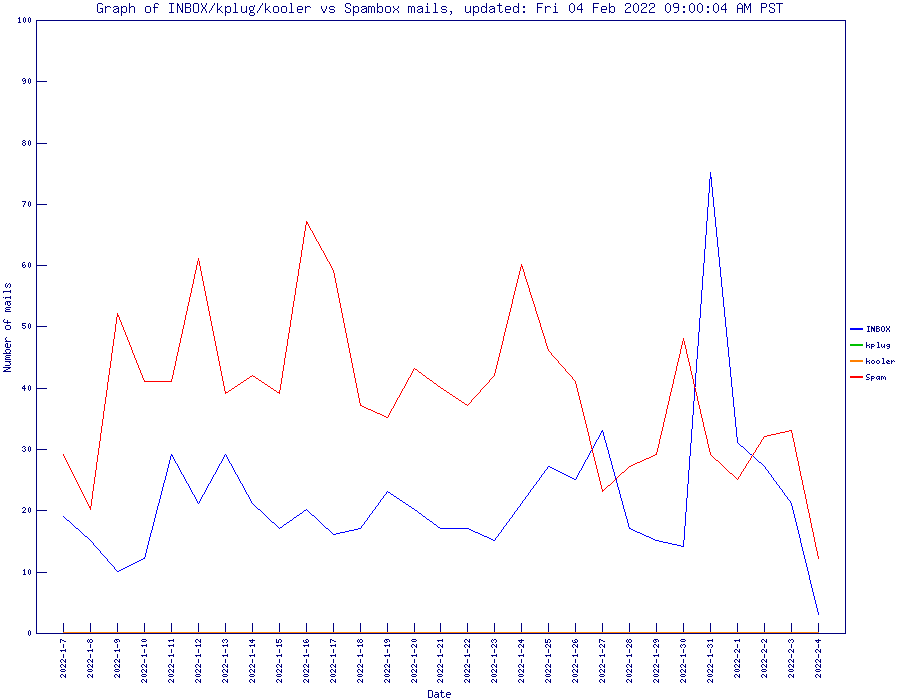The following data is/was pulled out of my procmail logs. Whichever box (spam, inbox, etc)
mails were filtered into, is what's charted.
I set this up to see how the trending works now that I've enabled Grey-listing on
my domain's MX server.
Grey-listing was enabled at approx 2:45pm on Thurs March 23rd, 2006.
Later that night, I also fixed a bug in my spamassassin install (perl related)
that was causing it to not properly scan a pretty large chunk of mails each day. I
estimate I was getting another 50-75 mails per day at least in my inbox that were
spam.
This graph will allow me to see how the grey-listing and fully functional spamassassin
does.
There was an odd statistical abberation in early Jan (07) (the real value was 980+) which I trimmed
to 300 to keep the scale reasonable (and future ones will be cut as well). Not really sure
why so many spams that day. However, I know why the number dropped to zero for a couple days
right after that huge spike... my cablemodem went out and wasn't fixed from mid-Sun 1/9 to Tueday.
That explains the spike just after in the 480 range (backed-up mail flowed in) but not the spike
beforehand.
kplug and kooler are 2 lists affiliated with KPLUG that get a fair amount of traffic.
Jun 29, 2007: You can see where my colo box (MX relay where grey-listing
runs) crashed late 6/23 and wasn't replaced until I got my new relay at
slicehost setup and running late 6/24).
Feb 25, 2009: If you click on the top graph and look over the life of the stats I have here, you can see that
spammers out there started to overcome grey-listing (by setting up systems with proper retry's vs just
blasting out mails 1 time) starting around August of 2007.. and it kept getting through grey-listing more
and more as time went on.
The chart below shows the previous 26 weeks of data, clicking on the graph will load a larger one
with all the data available in my logs.

Here's another graph, zoomed to last 28 days:

This page powered by Perl, #!/bin/sh,  and
and 
Comments welcome
Flames to /dev/null.


 and
and 